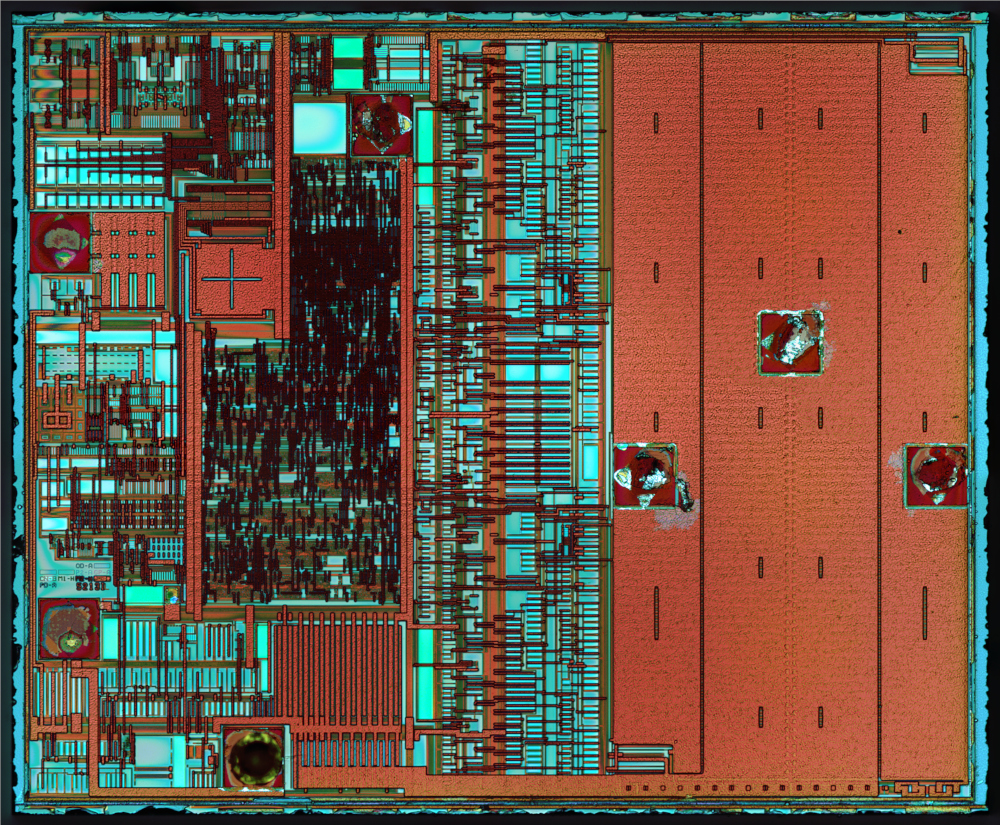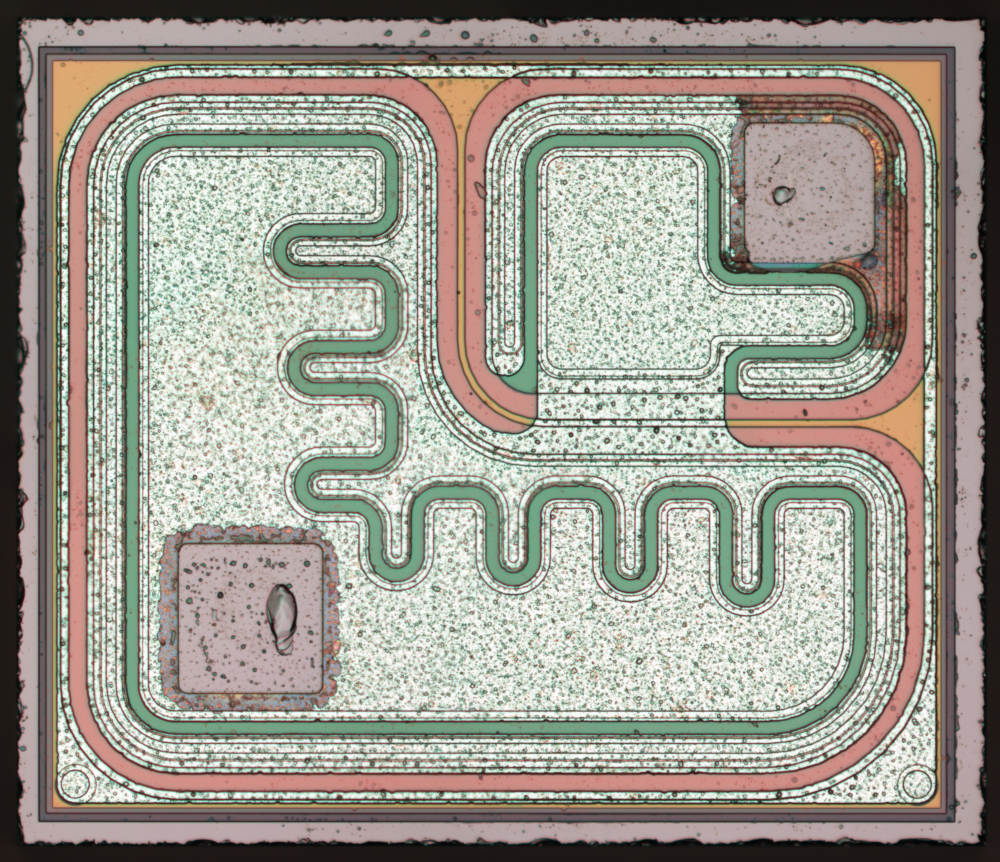July 15, 2018
BB OPA134PA - FET input opamp : weekend die-shot
Update: It is suggested that this is likely a fake (remarked) chip. Chip on the image is TL051.BB OPA134PA is a trimmed, low-noise low-distortion (0.00008%) opamp with FET input stage.
Die size 1592x1077 µm.
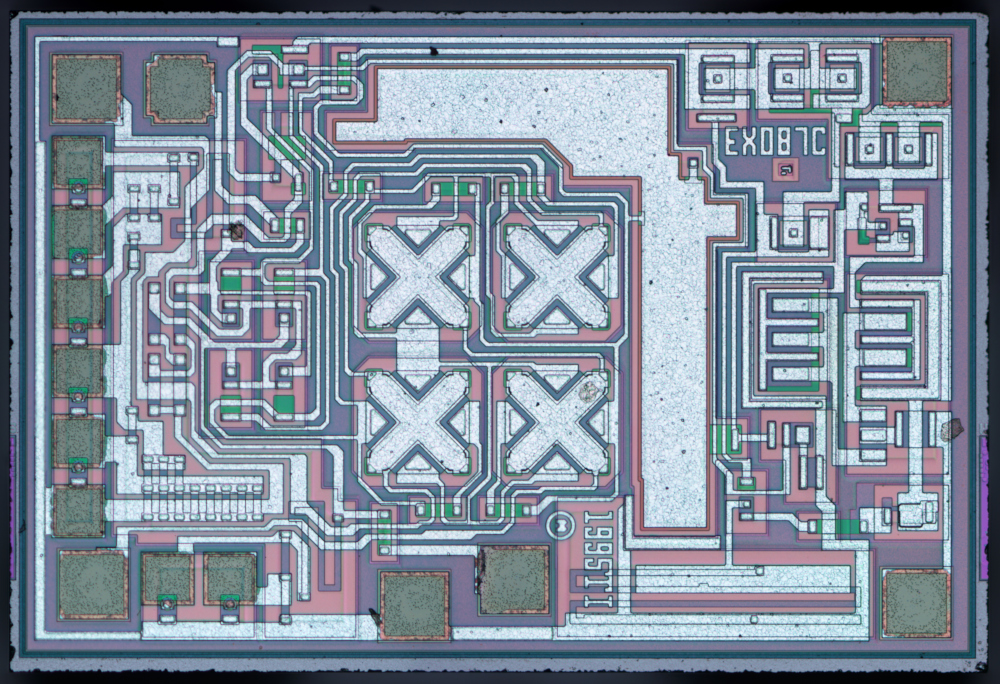
July 1, 2018
Microchip MCP6024 - CMOS R2R 10MHz opamp : weekend die-shot
Microchip MCP6024 is a CMOS R2R 10 MHz opamp with input offset trimmed down to 0.5mV.2 identical dies inside plastic package.
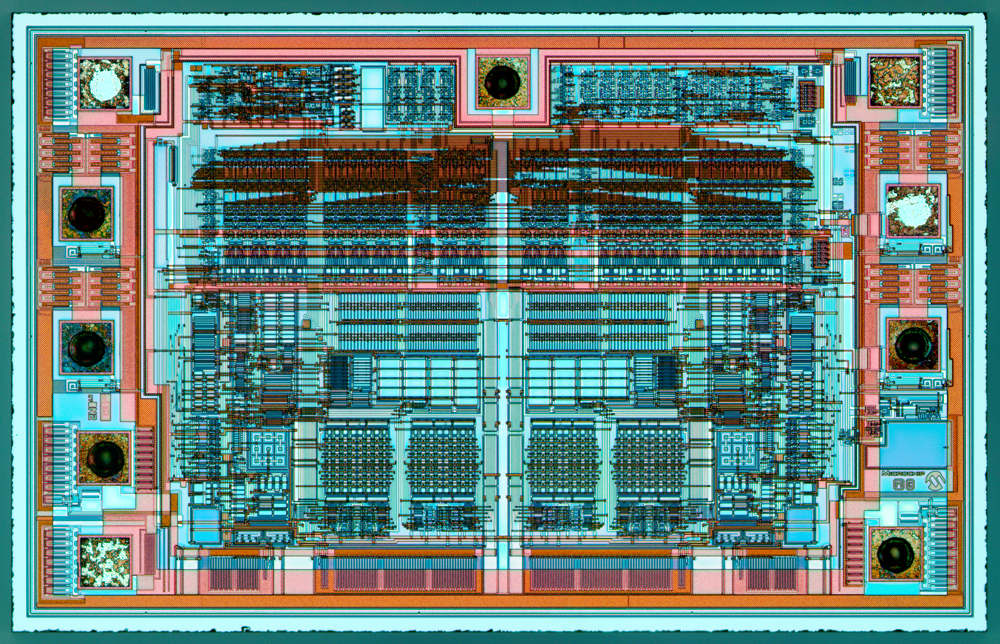
June 30, 2018
June 1, 2018
Ti SE555P - 1996 version in glass-filled DIP package: weekend die-shot
Some time ago we've seen Ti's 555 from 2006. This is an older one, from 1996. Die here is slightly larger, transistors are square vs round and no pads in the middle of the chip.Die size 1000x1020 µm.
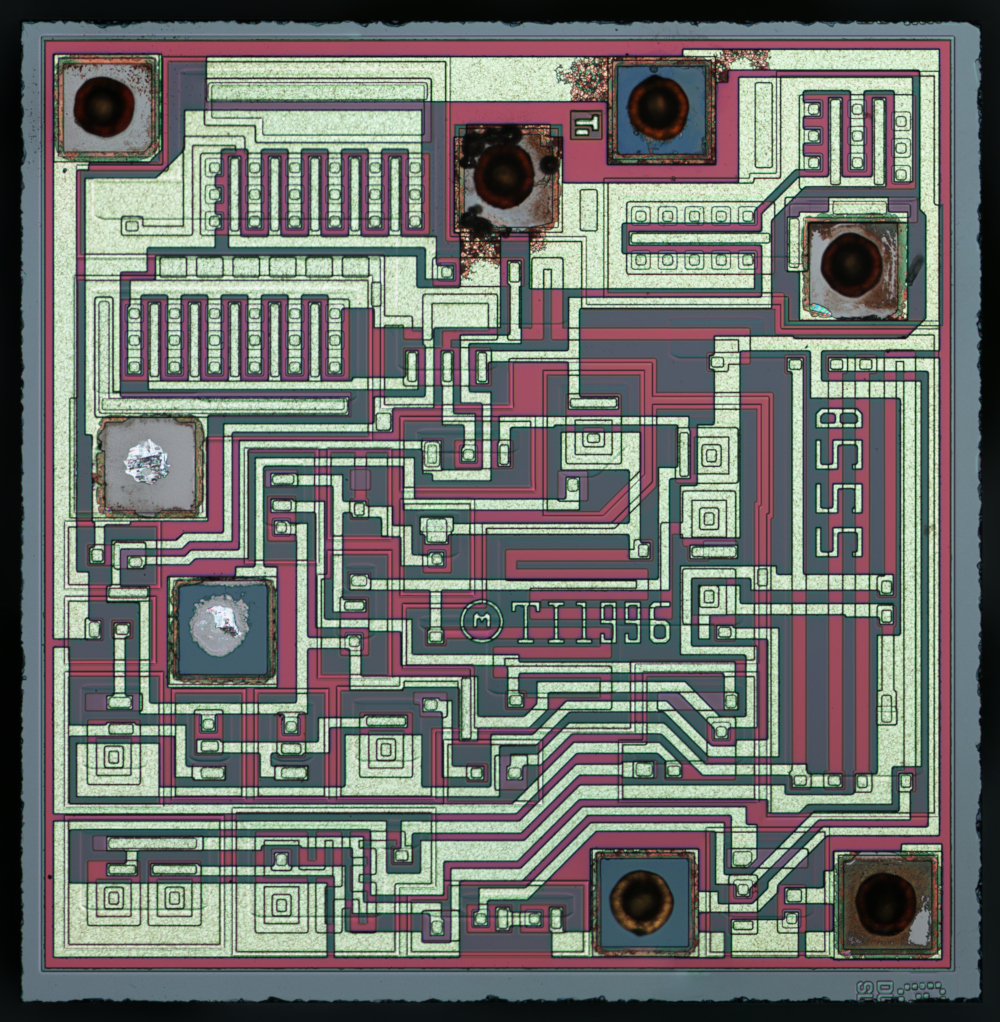
Read more →
May 25, 2018
Analog Devices AD9361 - when microchips are more profitable than drugs
When Analog Devices released their SDR transciever AD9361 in 2013 - it was a revolution in digital radio. SDR's were there before, but only now you can have it all: 2 channels for TX and RX with onboard 12-bit DAC/ADCs with 56MHz of RF simultanious bandwidth, local oscillators, mixers and LNA - all working in the range from 70 (TX from 47) to 6000Mhz. Using AD9361 out of the box one could implement almost any useful digital radio, with the rare exceptions of UWB and 60GHz. You only need to add data source/sink (which is still often an FPGA), external filters and PA if your task requires it.Finally I was able to take a look inside and peek at manufacturing cost of a microelectronic device with such an exceptional added value.
After decapsulation we see 4336x4730 µm 65nm die. On top metal you can notice PLL's inductors and datecode - chip was somewhat ready 2 years before introduction:
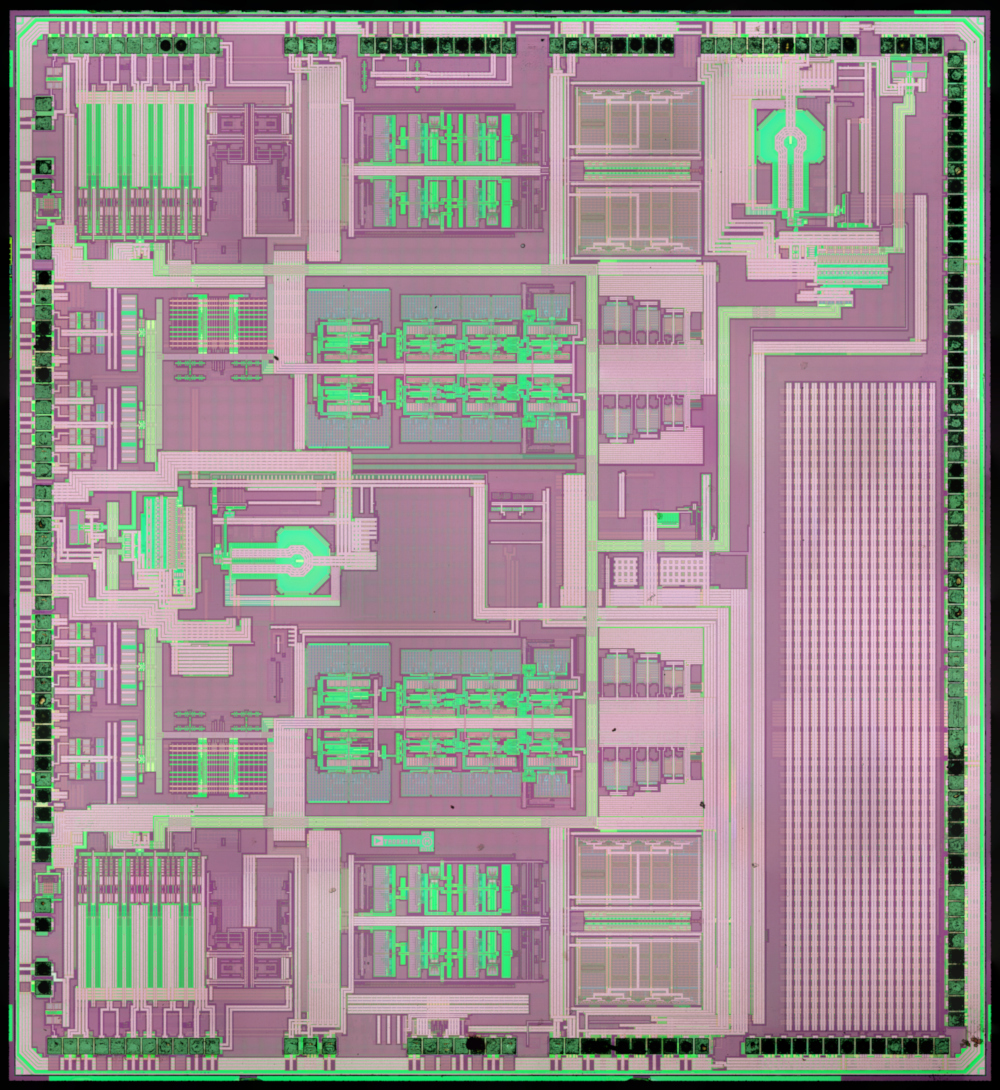
Read more →
February 28, 2018
HP DeskJet 840c thermal inkjet printing head : weekend die-shot
This chip was used in monochrome ink cartridge of HP DeskJet 840c thermal inkjet printer. Die has a "power" transistor to control heating element near each nozzle. External heaters are connected on top and bottom parts of the chip. "Heaters" are printed on a Kapton film using conductive ink, and this film is glued to the face of the die to directly connect printed heaters to the die pads. When heater is enabled - it forms small bubble of vapor which ejects small droplet of ink through the nozzle.Die size 15.12x4.39 mm.

Inkjet nozzles on a Kapton tape are likely ion-etched, laser drilled holes should have been much less perfect. On the other hand positions of nozzles are slightly not regular.
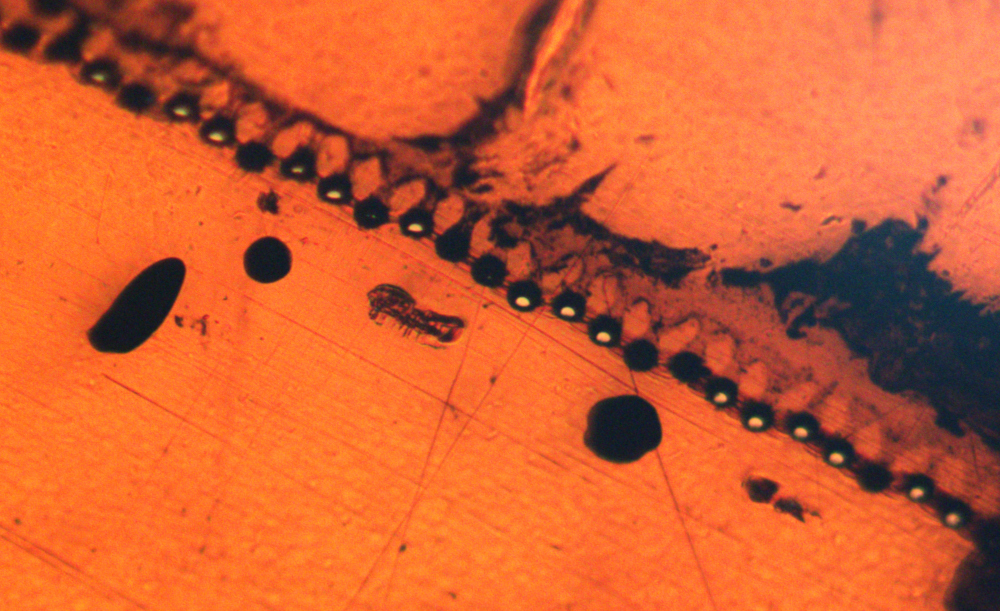
Nozzle diameter is 25µm, nozzle pitch is 75µm.

February 27, 2018
Diodes (?) AH284 - brushless fan controller with integrated hall sensor : weekend die-shot
We've found this chip inside ThermalRight X-silent 120 fan. Chip has markings 284 9511 which probably means it is Diodes AH284 (or compatible). On the chip there are 2 power FETs and hall-effect sensor.Die size 1360x1118 µm.
